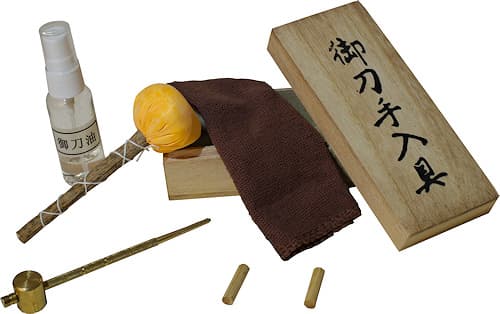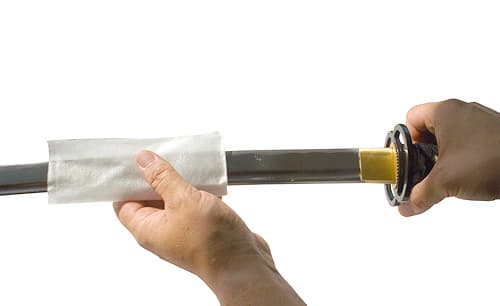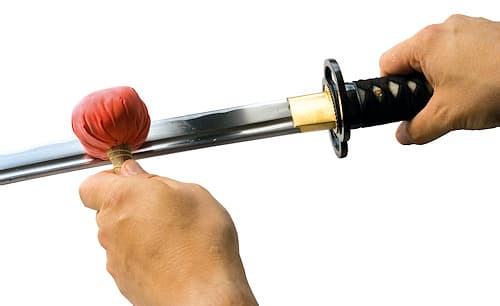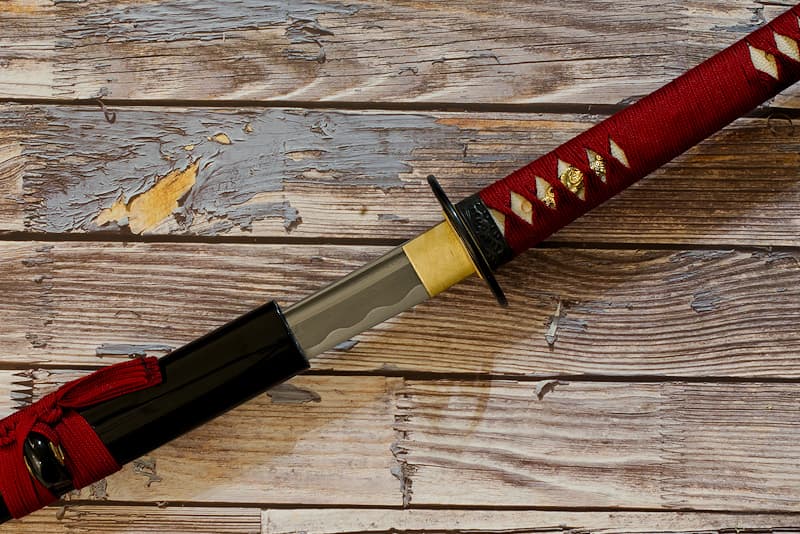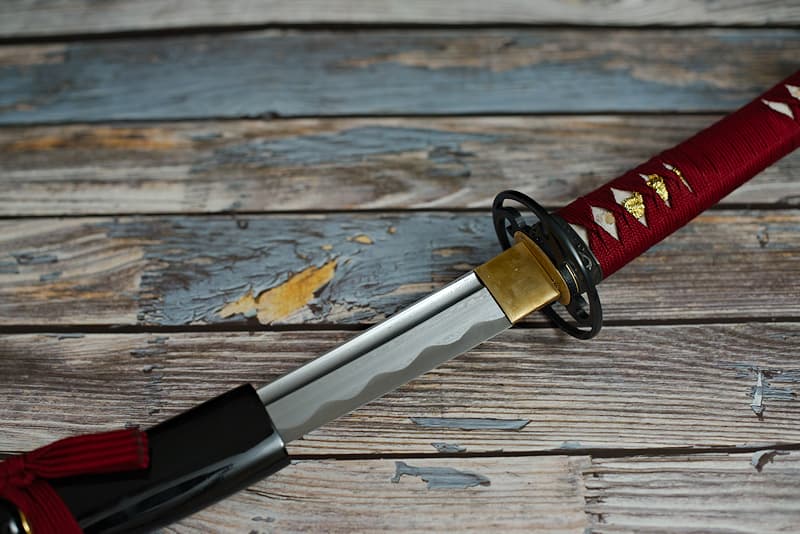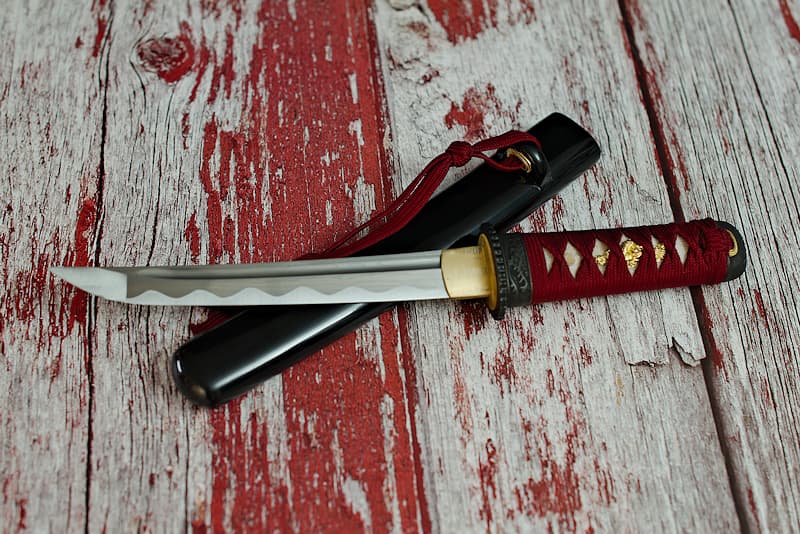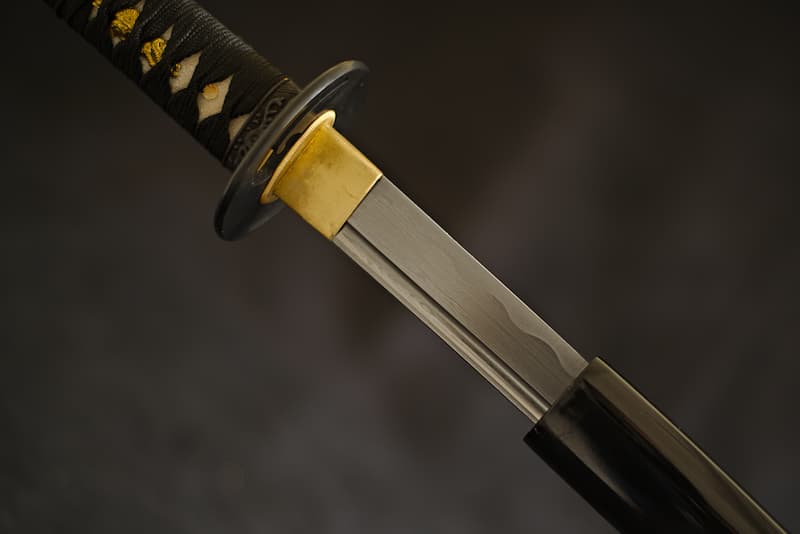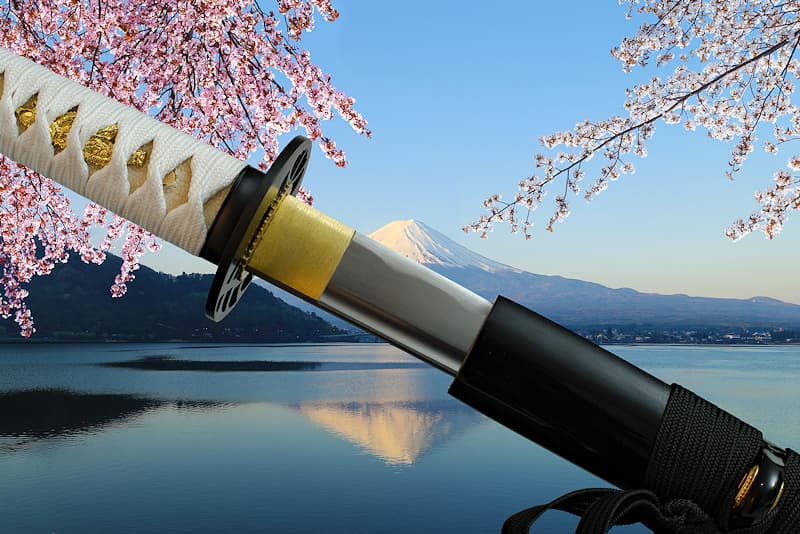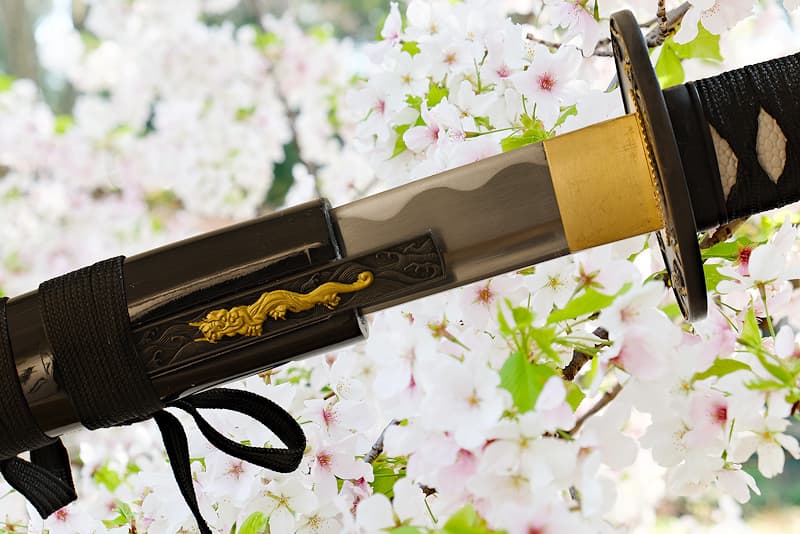Wakizashi sharpened Damascus forge "Ketsueki" (血液, blood), red braids
Sharp Wakizashi, damascened forge, with black scabbard (saya 鞘), tsuka-ito (柄糸) and dark red sageo (下緒), delivered in a wooden box containing a maintenance kit and a protective cloth cover
Reference No. 0622 - Arriving in early January 2026
€240 (free shipping)
I was born in a bloodbath. The renowned but discreet blacksmith who gave birth to me was a victim of his own success. Brigands robbed him while he was finishing forging the katana blade for me and my sister. Having no mount at the time, they paid no attention to me on the polishing stand. But when the samurai master to whom I was destined discovered the forfeit, he found a new craftsman to create my blood-red mount. Then he set off in search of the thieves. One by one, he found them all, in hiding, sometimes with new identities. None escaped.
I've kept my red and black mount. My destiny remains tied to fairness. I accompany my big brother, the katana. Together, we extend the arm of the samurai, whom we serve to slice through his adversaries and deliver justice.


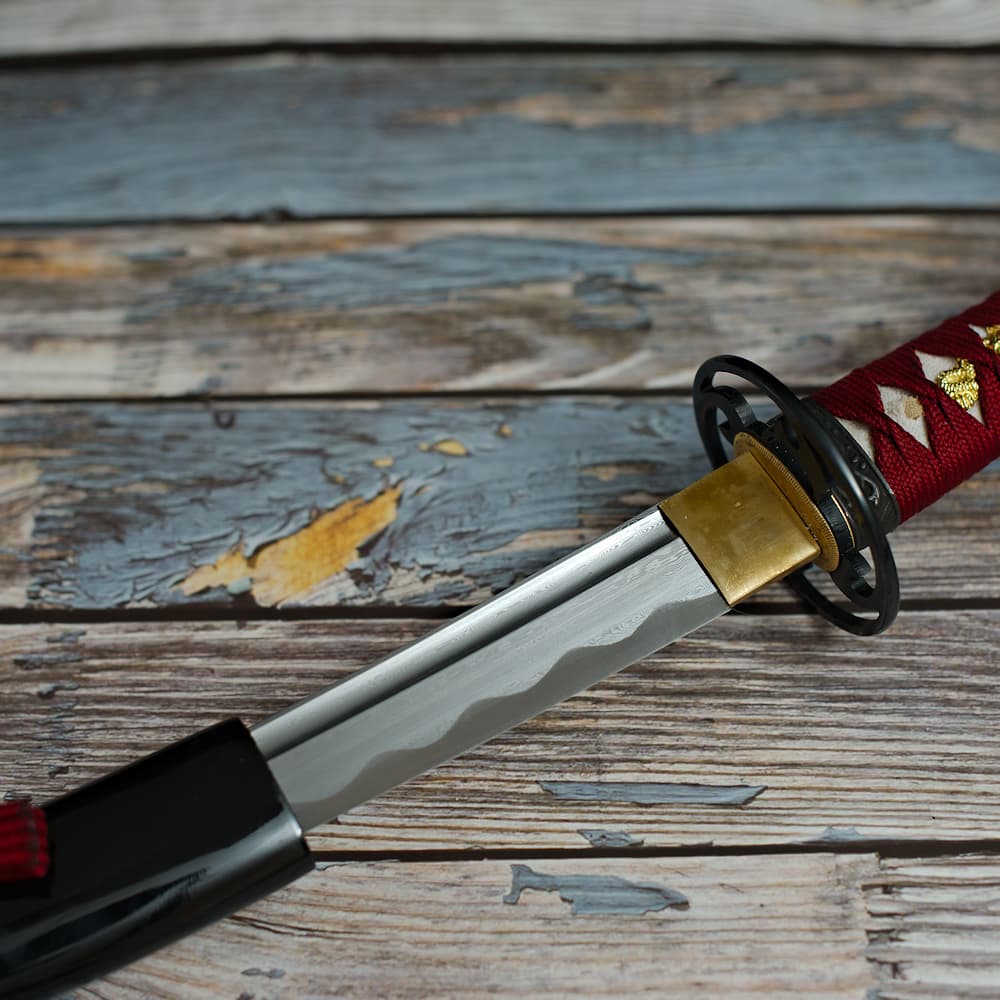


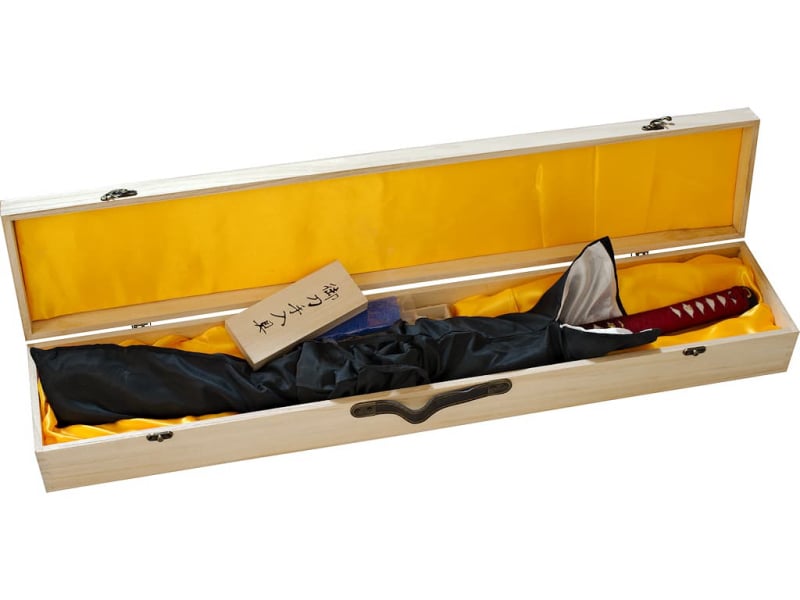
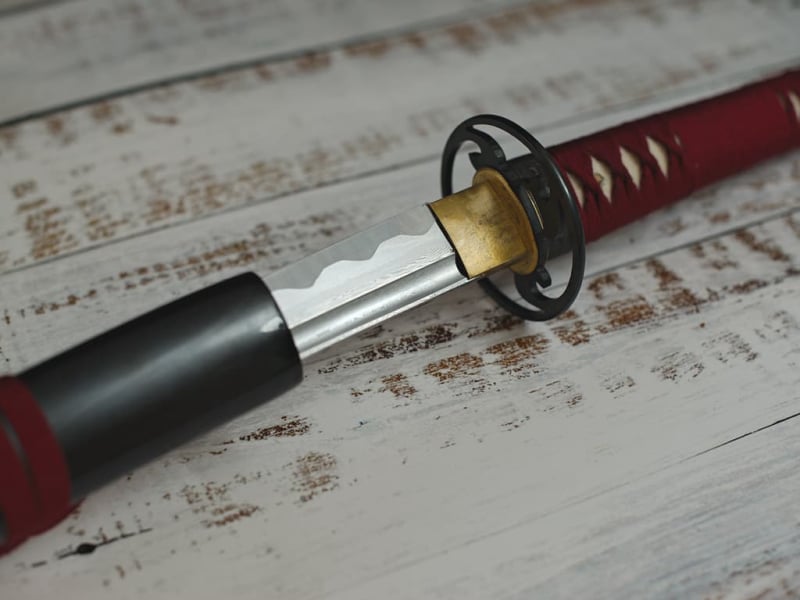
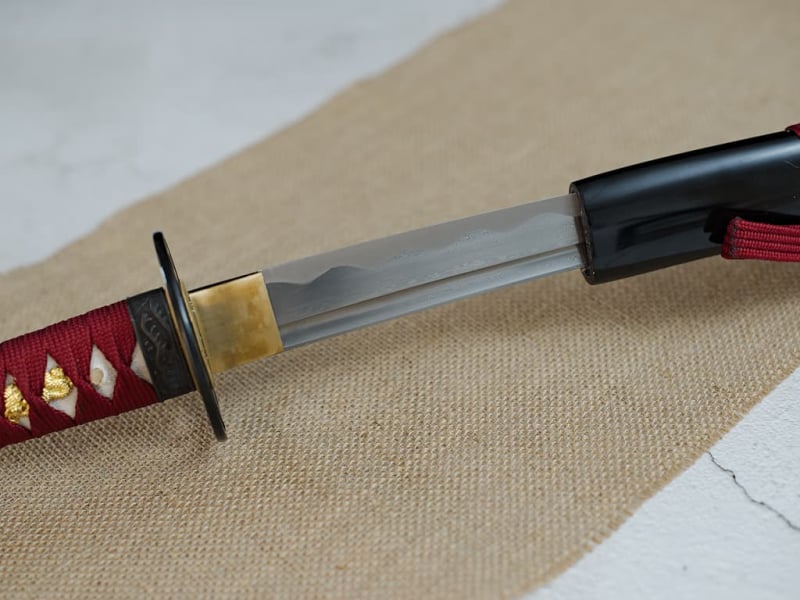
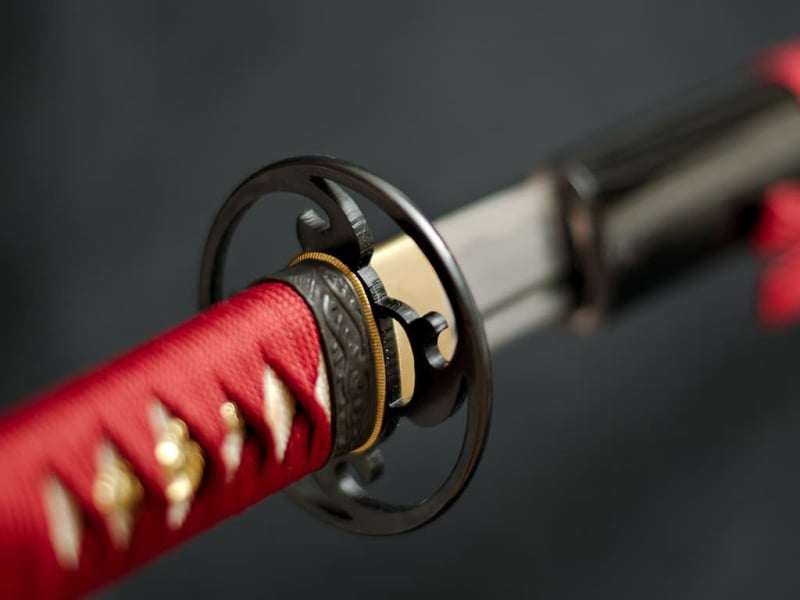
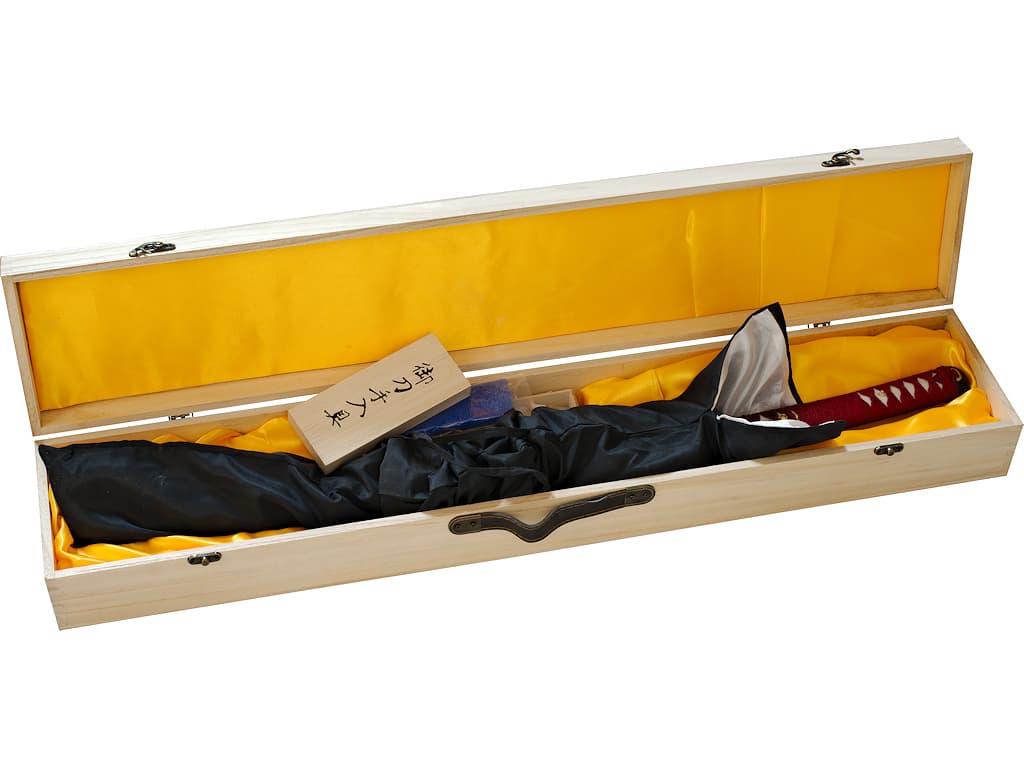
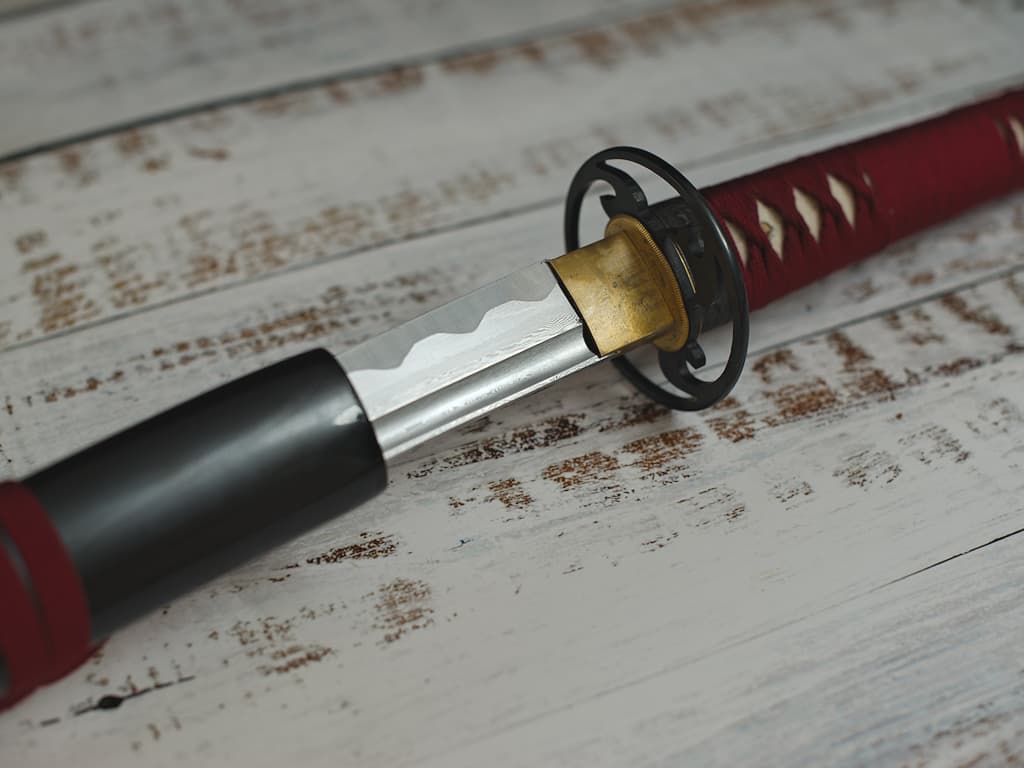
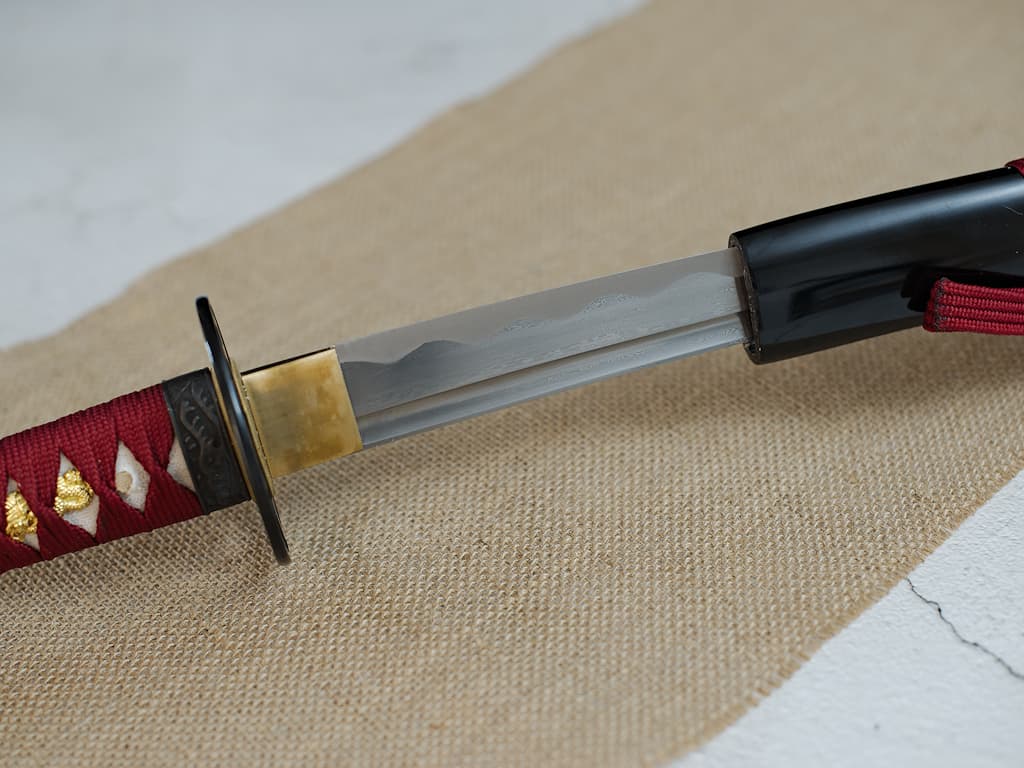
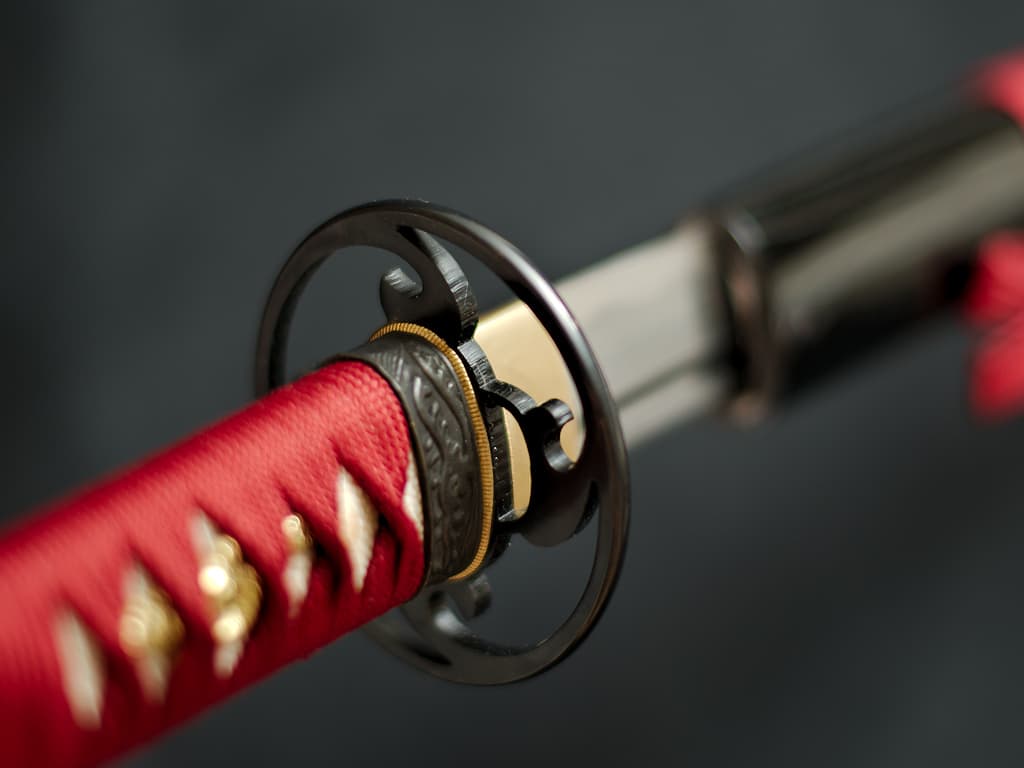
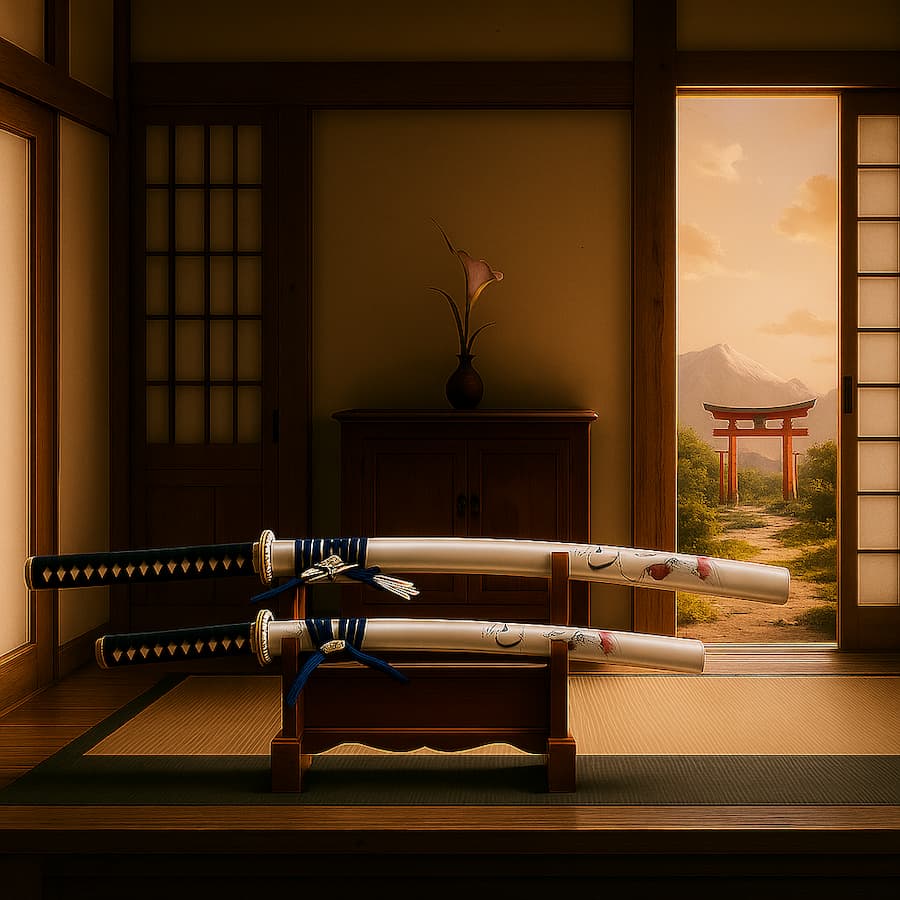
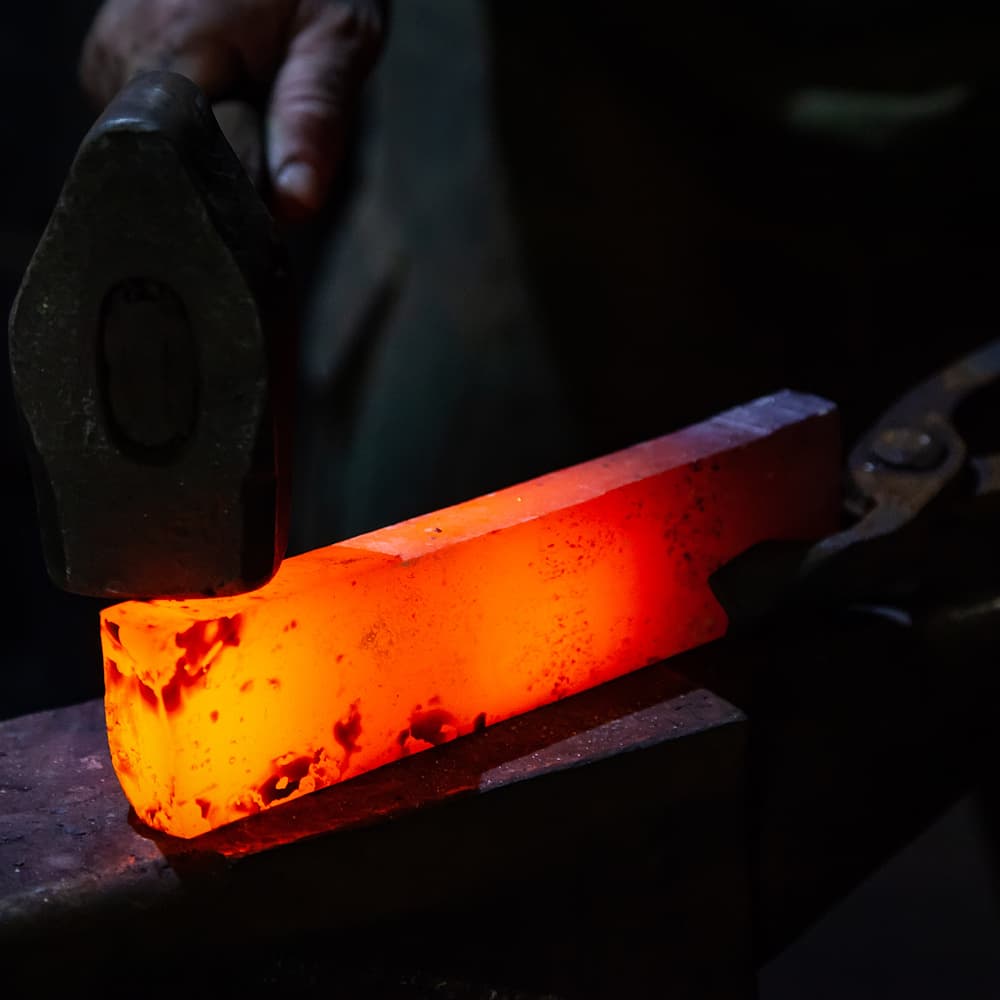
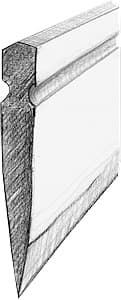 . Mune (棟) : Hikushi
. Mune (棟) : Hikushi